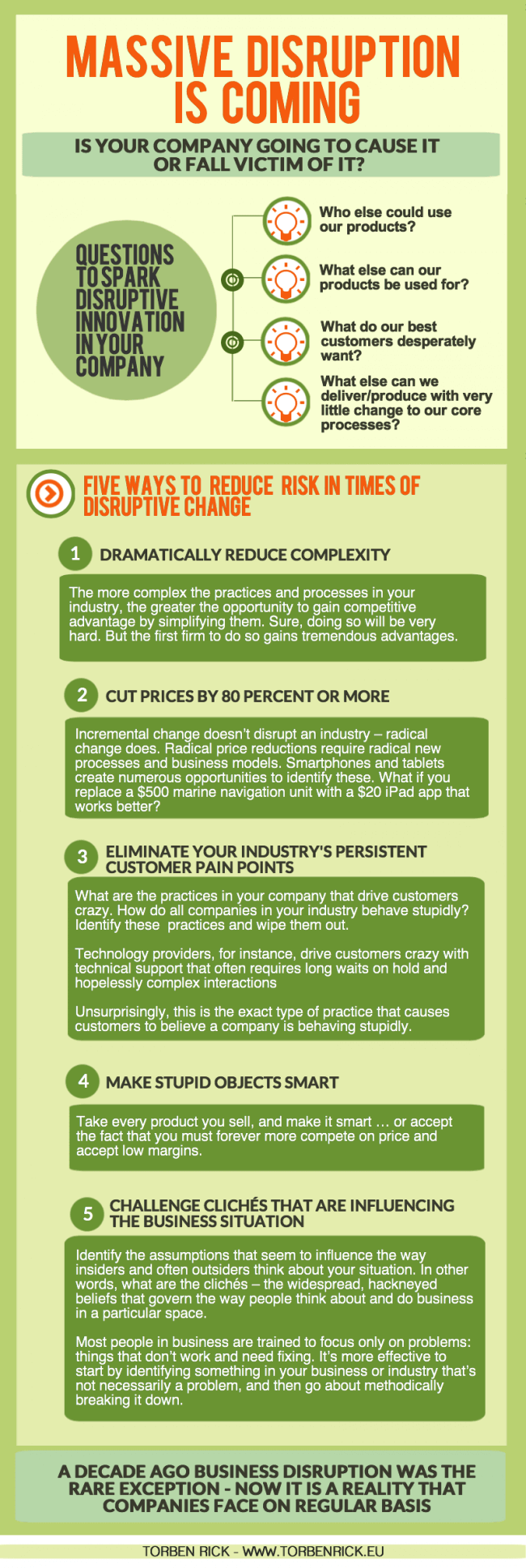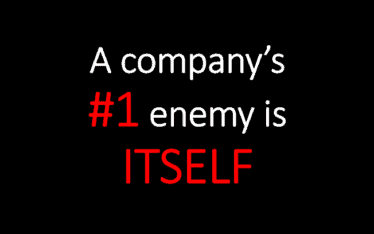The past is no longer a good predictor of the future
Company behavior has changed: the average life expectancy of a Fortune 500 company has dropped from more than 80 years to less than 15 in the last century. Consumer behavior has changed: the aging baby-boomers are not acting like the elderly of previous generations. Babies today leave the hospital with a blanket, an iPhone and a Facebook page
Technology is becoming so pervasive that it is re-disrupting cultures all over again
The digital music revolution started unintended when peer-to-peer file service “Napster” started by Sean Parker & Shawn Fanning in 1999 controversially morphed into a digital music sharing service.
It became mainstream with the highly successful launches of the Apple iPod & iTunes in 2001 and now services like Spotify are taking it to next level by integrating it to our increasingly digital lifestyle. As is the case of all life-changing trends, an unintended start changed the whole experience of buying and consuming music.
It is fascinating to see how technology is becoming so pervasive that it is re-disrupting cultures all over again. As in the case of digital music, the most fundamental driving force to this change is the Internet:
- Reading a book – Digital reading represents a major disruptive change that threatens publishers’ bottom lines. Will ebooks edge out print books worldwide?
- Watching TV and movies – Is streaming video going to kill DVD and Blu-Ray?
- Sharing – A different form of consumption, a collaborative consumption: renting, lending and even sharing goods instead of buying them
- Smartphones and tablet-PC – They have already disrupted or is disrupting many different business
- Virtual stores – Will virtual stores based on QR disrupt traditional retail?
Fundamental strategic questions
We’re not living in ordinary economic times!
The convulsions of the past years have left many business people asking the most fundamental questions about their companies:
- Will our strategy work in this environment?
- What must we change, and what must we not change?
- Do we need a new business model?
The time has come to rethink strategy:
- What is our core?
- How is today’s unprecedented environment changing our customers and their behavior?
- Is our industry being deeply restructured, and if so, how will it affect us?
Short URL & title:
Is traditional strategy dead – Time to rethink everything — http://www.torbenrick.eu/t/r/cbx
Share it:
If you enjoyed this article, please take 5 seconds to share it on your social network. Thanks!









All companies and business practices change and evolve with time. The quicker you accept change and adapt to it, the more successful you will be.
Well the whole situation can be summed up by adding technology to Peter Ducker famous notion, the management guru who 60 years ago wrote that corporations have only two core functions: marketing and innovation. Now I would suggest it has three, marketing, innovation, technology focus.
Great infographic! Torben ?
Some great points Arshad – Thanks